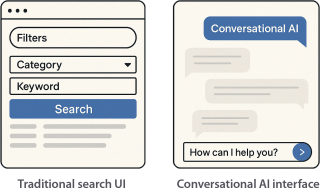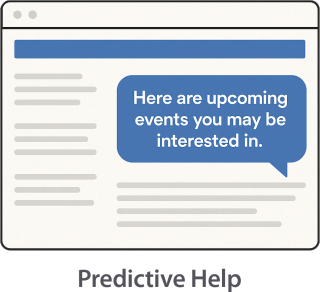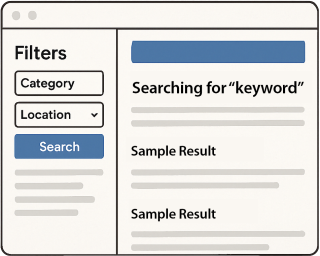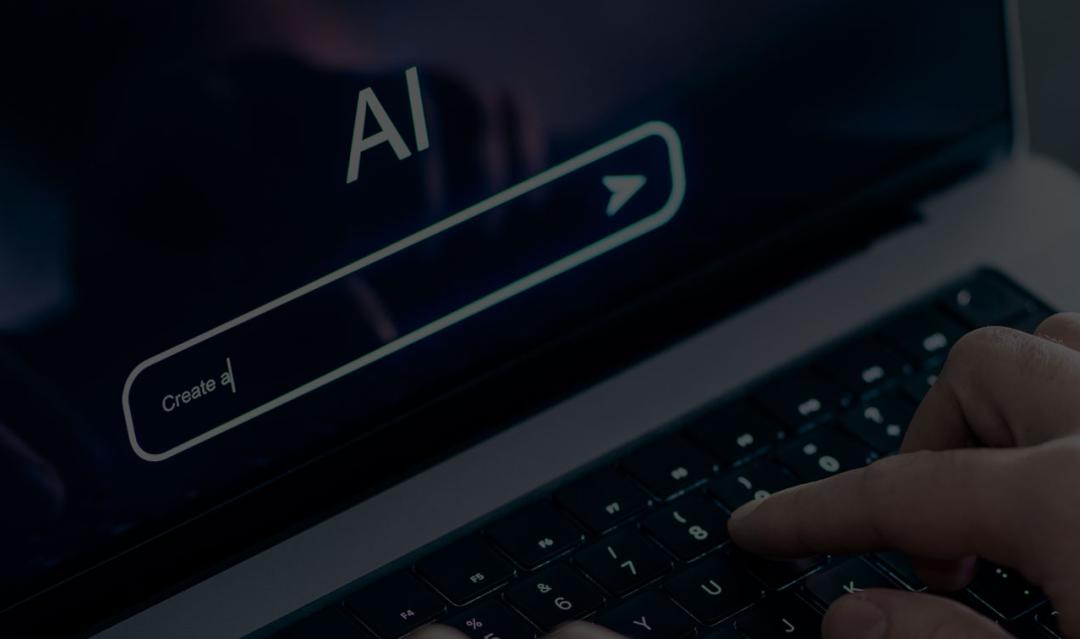Is AI the New UI?
AI is changing what users expect from your website.
AI is everywhere—reshaping industries, generating headlines, and sparking intense debates about the future. But while much of the conversation is focused on the promise or dangers of artificial intelligence, a different transformation is quietly unfolding: how we experience the web.
AI is changing the way people interact with technology. That includes expectations for websites and digital interfaces. It’s not just about design anymore—it’s about the intelligence behind it. And as users begin to expect smarter, more conversational, and more helpful experiences, the traditional patterns of user experience (UX) are starting to feel old-fashioned.
Every major shift in tech brings a shift in expectations. What once felt cutting-edge quickly becomes a burden. Remember printing out a boarding pass before your flight? Today, most travelers expect to manage their entire trip from a mobile app—no paper, no kiosk, no problem.
AI is pushing that expectation even further. Why should users have to know which website to visit, which button to click, or what keywords to search for? Why not just ask for what they need—and get it?
That’s the future AI is ushering in. Let’s look at four ways it’s already changing the digital experience:
- Conversational Interfaces
- Predictive Help
- AI and Search
- Zero-Click Expectations

Tools like Amazon Alexa, Apple Siri, and Google Assistant introduced the concept of talking to your tech. However, the experience has often been clunky, with misunderstood commands and irrelevant results.
Generative AI has changed that. Platforms like ChatGPT, Claude, and Gemini have brought nuance, context, and empathy to conversations. Instead of frustration, interacting with AI can be joyful. You have a very knowledgeable companion to accompany you as you browse.
This shift is significant for UX. Users no longer need to adapt to the interface; the interface adapts to them. They can type full sentences, ask follow-up questions, or change their minds mid-conversation, and the AI keeps up.
Compare that to the traditional web experience—searching Google, clicking through results, navigating menus, etc. It starts to feel dated. Especially for younger users, it's not the experience they expect.

Traditional UX waits for the user to initiate interaction. AI changes this dynamic.
Instead of waiting for the perfect prompt, AI anticipates user needs based on their behavior. For instance, if you're browsing a college website for course information, AI might suggest relevant terms based on the current date, or related programs to your search, all before you even ask.
We believe good UX has always aimed to reduce friction. Predictive AI doesn't just reduce friction—it creates momentum, guiding users forward.
Once users experience this level of support, they expect it everywhere. If your website doesn't offer it, users might turn to their preferred AI tool instead.
Users no longer need to adapt to the interface; the interface adapts to them

Most websites offer search tools with filters—dropdowns, checkboxes, keyword fields—to help users narrow things down. That’s useful UX, but it’s still work. The burden is still on the user to know how to search, what options to select, what keywords to use, and which result to click on.
AI is teaching users that search doesn’t have to be a chore. Just ask your question. Refine it naturally. Get smarter results as you go.
And it doesn't have to mean fully replacing the search interface with chat. AI can assist users using more a traditional search UI, offering suggestions on what filters to try, keywords to enter, and other ideas to help narrow down your selections.
As this behavior becomes more common, search interfaces will need to evolve. Sites with rigid, outdated search tools may find themselves losing users to platforms that can simply understand what people mean.
One of the more disruptive shifts we’re seeing is what’s called zero-click browsing. You’ve probably noticed it already: Google gives you an (AI-powered) summarized answer to your question—right at the top. No need to click. No need to visit a site.
The implications are huge. If users don’t need to visit a website to get the answer, why would they?
This isn’t the death of the web—not yet. People still click. Traffic is still flowing. But it’s a clear signal that the old model of “write content, optimize for search, get clicks” is changing.
What should website owners do in response?
Make content accessible and structured – Use semantic HTML, clear writing, and Schema.org to help AI and search engines understand your site.
Invest in AI-powered tools – Consider chatbots or search tools trained on your content to replicate that natural language experience.
Don’t bury the good stuff – Give users what they need, fast. Every page should be useful, findable, and smart.
Not entirely. Design still matters. Layout, typography, hierarchy—all of that remains essential to creating great digital experiences. But there’s a growing layer of intelligence that users are beginning to expect, whether they realize it or not.
At Electric Citizen, we think about this a lot. We build websites for organizations who want to stay ahead of the curve—not just in how they look, but in how they work. If you’re curious how AI might reshape your digital experience—or how to get your site ready for what’s next—we’d love to talk.
Let’s start the conversation. Contact us to learn how AI-enhanced UX can help your site meet the moment.




Join the Discussion +